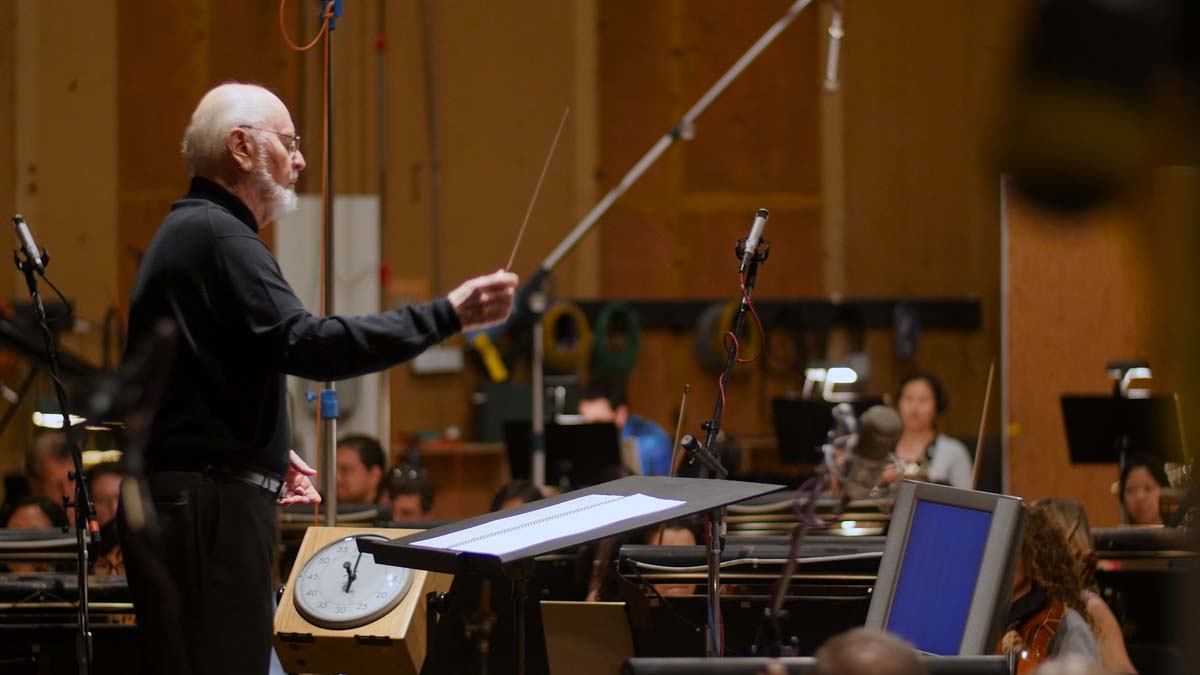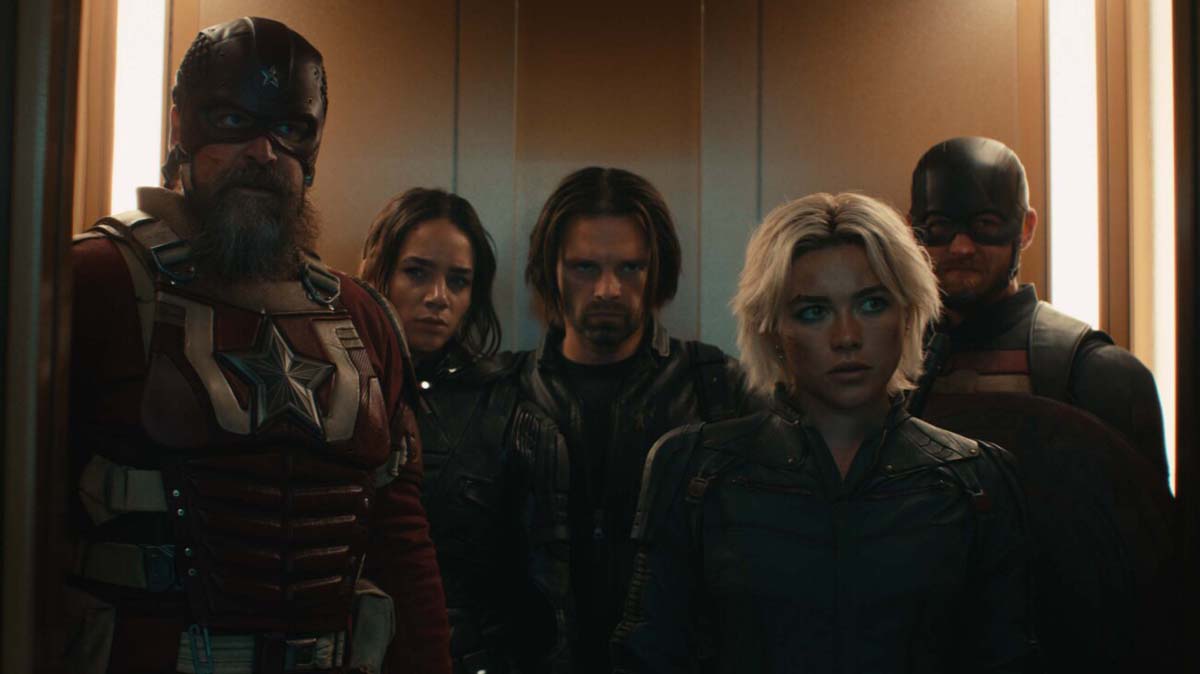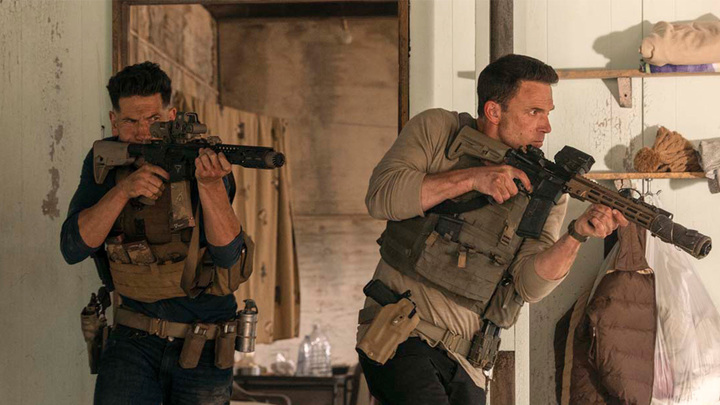Mufasa: The Lion King
The discussion today is about - among other things - the workflow similarities between Mufasa and Avatar, the benefits of watching dailies with the director and cinematographer, and the learning curve of cutting animation for the first time.
Today on Art of the Cut, we speak with Oscar-nominee Joi McMillon, ACE, about the editing of Barry Jenkins’ Mufasa: The Lion King.
Joi’s been on Art of the Cut before for Moonlight - for which she was nominated for an Oscar and an ACE Eddie and for Underground Railroad. She also edited Jenkins’ If Beale Street Could Talk among many other projects.
Joy, thank you so much for joining us to talk about Mufasa.
Thank you so much for having me.
The first time you and I spoke was for Moonlight, which was, I believe, your first of several projects with director Barry Jenkins. How did that collaborative relationship begin?
Barry and I met in film school at Florida State University and our first collaboration on a project was actually him as my cinematographer when I did production design/makeup/costumes for his filmmaking III project. So our collaboration goes way back to when we were teenagers. We’ve been collaborating ever since.
From my limited research, animation is new for both you and Barry. Was there a learning curve? What did you learn?
The thing that I learned from this project: essential to everything that we were able to do on this film was communication. A lot of the different departments - from visual effects to animation - had worked on the previous 2019 Lion King, so for us, we had to catch up to where they had previously been. And - for them - they had to reimagine the capabilities of not only visual effects but animation to fit artistically what Barry and I like to do in our cinematic process. I think it was a learning curve for both the people who worked on the previous film and for us who were new to this animated world.
Can you describe that process a little bit? I’ve done several interviews with animation editors, and it’s a very different process. You’ve been a live-action editor. Talk to me about jumping into the deep end of that.
The thing that a lot of people don’t understand when it comes to the animated process is that as an editor, you’re editing way more than you ever do on a live action film because the film is basically built in editorial even before production starts. So for us, we initially started with a temporary troupe of actors who could act out the script for us, and Barry and I used that to cut a radio play. That radio play then informed the story department - the people who were creating the storyboards for us - how to create these characters and what they’re doing in each scene. Then that jumping off point was given to the cast and to the animators to start creating these virtual sets and doing their own voice records. So in the span of three and a half years, Barry and I worked more together than we probably have ever done on any of our live action films. It was a really cool process for me because basically, as we were working on the voice records, I could see Barry - in real time - start to create the dialog and the depth of where each character was going to go as he was hearing these actors act out these scenes, and he was responding to it in real time, saying, “Oh, that was a cool line. Let’s take it here. Oh, that’s a cool response, but maybe what if you say this?” So the voice record experience for us evolved in real time. The way we shaped this film was over a lot of different countries, a lot of different time zones.
To actually get actors to record at the same time was really difficult because a lot of people were in different places working on different things. But Barry was very adamant that’s Tiffany Boone - who played Dorothy - and Aaron Pierre - who played Mufasa - record together for the scene where they actually find out that they have feelings for each other. There were certain cases where Barry really stressed - even though it took a lot of organization, a lot of people connecting schedules and whatnot - there were certain situations where Barry was very concerned because he wanted these two actors to be able to do this together in real time - being able to respond to another actor when you’re having this very intense scene - it’s crucial. And I will say, as an editor, you get certain reactions and you get a depth of emotion from these actors when they’re actually responding to each other in real time. Another one was Taka - who’s played by Kelvin Harrison Jr. - and Kiros - who’s played by Mads Mikkelsen. Their big scene together was another one that we recorded together, even though I think Mads was in Majorca, and Kelvin was in Toronto. So these are the time zones that we’re dealing with, but it made a difference. The magic of their performance and the organic responses that they have and everything feeling very authentic was due to the fact that they’re doing this in real time together.
That’s an interesting point that for some scenes you got the pacing from the interconnected performance of two performers, and sometimes you’re constructing that from performances that were recorded days and thousands of miles apart. On those performances where they were together did you tend to leave the pacing of those performances the same, whereas the other ones you had a more construct?
One of the things that Disney is very aware of is the attention span of children. We come from the world of Moonlight and If Beale Street Could Talk, so a lot of that is very languid language of time and space and constructing performances that are definitely emotionally driven. But for us to work on a movie that’s also going to be consumed by children we were very aware of sometimes you have to repeat things over and over again for a kid to understand something or they have to create language between two characters that can be explained in the way that a kid will pick up on. So we have to operate in a space that we’re very aware that children consume, but also still leaving our artistic sensibilities in it. It was fine-tuning and trying to find a balance between those two worlds that was very intriguing - working on a project like this, but we also wanted to still have the experience of watching something that’s been created by Barry Jenkins.
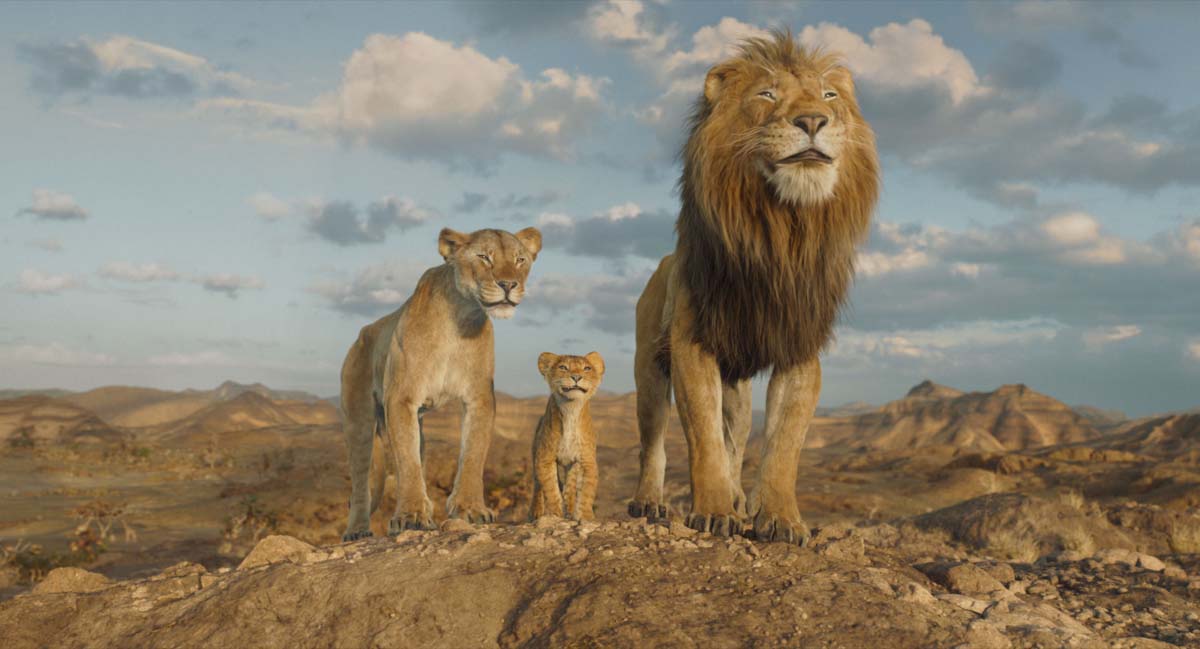
So when you’re done with this radio cut with temporary actors was your next step storyboards?
Yeah, we had a great storyboard department that was led by John Coven. During he pre-production process - which lasted for about 3 to 4 months and still spilled over while we were shooting - Barry was still meeting with the storyboard artists because there were some scenes that were initially written one way then evolved into something different. Barry would also meet with the storyboard artist to redesign what was initially created. To see Barry speak with the storyboard artists - because they’re constructing something that doesn’t exist in a lot of aspects - we had a location that Mark Friedberg, our production designer, along with Barry had mapped out the journey that the characters would take in the scene. All of the locations that exist in the film are based on actual locations in Africa. Barry then spoke with the storyboard artist and told them what’s actually taking place and what the character’s actually doing in each scene. All of this was a discussion even before they got into production, because the storyboard artist would draw the scene, then the animators would take that and create the world which James [Laxton], our cinematographer, would virtually shoot it. The foundation was the radio play, then the radio play informed the storyboard artists, then the storyboard artists informed the animators, then the previs process would start and that would inform the animators who did our final animation. You’re constantly creating all these different levels to end up with the final product that’s the final render you see now.
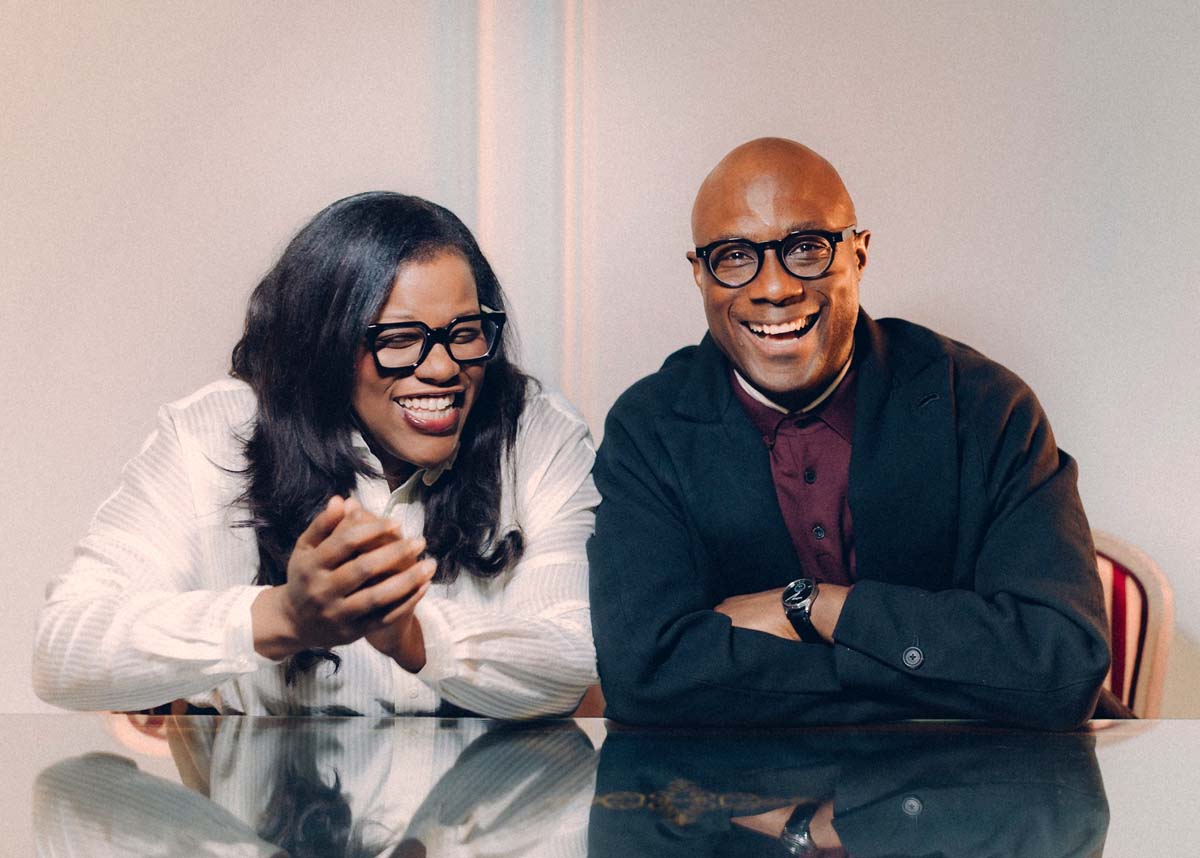
Joi McMillon, ACE, and director Barry Jenkins
You mentioned that the storyboard artists informed the animators. You had to be in the middle of that yourself.
Yes, I was in the middle of that. Oftentimes on my laptop, I would either be on a storyboard Zoom, or virtually watching Barry as he did a location scout, so I’m constantly receiving animation as I’m in there editing radio plays and creating the final animatic to send to the animation department. I was constantly getting information as I was creating information for other people. To sat that we were firing on all cylinders is an understatement. Being able to do Underground Railroad - which was the series that we did prior to doing Lion King - was super helpful because I edited five of the ten episodes for Underground Railroad, and that was another situation where I was kind of in the final edit for one episode, then starting in dailies on another episode. So I was constantly in different places at the same time and having that knowledge and having that experience of being able to talk about visual effects for one episode and look at dailies in another episode really made me expand on how I received information and how I translated information, then how I delegated things to my assistant editors. Nothing will ever be as hard as that - moving on to Mufasa was like, “Okay, we can do this!
You mentioned the word “shooting.” Can you describe exactly what the process was and why you’re talking about shooting something that’s animated?
After the radio plays and storyboards, we had meetings and Barry would virtually scout locations. The animators created a set based on that storyboard animatic, and the characters would move within that set, giving lines of dialog. Barry and I have previously cut for each character, and so that is basically the set is set up, and they’re doing these lines of dialog and it kind of runs on a loop. And James, Lex and our cinematographer would then go in virtually and he would shoot each character throughout the scene, so there could be a tight shot on Mufasa then a wide and a three shot. So you’d see Mufasa, Sarabi and Taka, then you do an insert so you can see Zazu entering. So I had dailies for every single scene. I had dailies that were shot by James, then we would edit those together.
So you get actual coverage? That’s so unusual for animation.
Yeah. There’s a massive elephant stampede in the movie. I don’t even know how many different shots I had for that sequence. I had a ScriptSync document that could have spanned across three monitors. That’s how many shots I had in the Elephant Stampede. James did coverage on every single character throughout that whole entire situation, including, the Outsiders, including Zazu, Rafiki - the coverage of that scene was massive. I had so many choices, but it was really cool because for me - cutting something that is so action driven - I had so many options.
The other thing that was really cool is that as Barry and I sat together and worked on this sequence, if there was ever something that we didn’t have, we could then bring James up and say, “In this section, what if we panned to Taka then Mufasa and we can make this one shot?” So then James can either go back down and work with knew she was one of our, visual effects creators. So she had the ability to go in a shot and actually recreate the camera angles if we wanted to, just them. And so it was either James could work with Mahyar Sadri on the actual set and reshoot a camera angle.
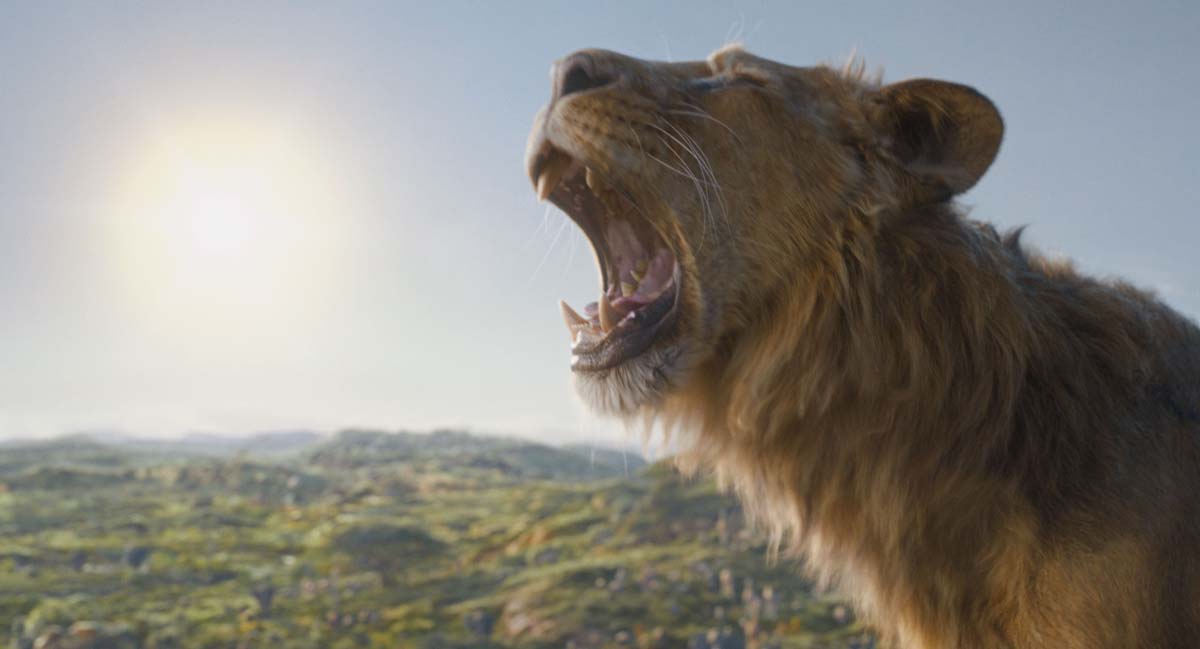
James Laxton, our cinematographer, also went to film school with Barry and me. We’ve all known each other for 20 plus years. It was really cool that as we created this film, we could all get together and huddle up and decide the best way to tackle a new shot concept. Is it a oner? Is it something where we get new coverage of Mufasa and Taka separately? Or is it something where we create a new shot that hadn’t been generated before? That was part of the process that I really, really enjoyed because when we do a live action movie, it’s Barry and James working on production, then Barry working with me in post-production. But on this we’re able to collaborate in real time together, which was a lot of fun.
And you’re you’re able to ask for things that you probably couldn’t ask for on a live action feature. You could have a day of reshoots or something, but not multiple individual shots, right?
Exactly. One of the things that was really cool, because I worked with Maisie Hoy for about six and a half years together as her assistant editor, and she would talk about when she worked with Robert Altman, and they would have time to sit down and watch dailies together, and I’ve never really had that experience. But on Mufasa there were times where James, Barry, and I all got together in the theater and watched dailies together, and Barry would give notes to James about things he wanted to fix. He’d say, “This is my hero shot.” So we all got to sit in the theater and talk about how Barry wanted to maybe recreate the shot or how he loved this one particular shot, and this is how he wants the scene to start. It was so lovely to experience that together because we’d all been collaborating with each other for years, but kind of at different times. So this was the first time that we all got to overlap, and artistically it was a lot of fun to hear them talk about what they loved. So, for me as an editor, when I’m making my choices, this is something that I should feature because everyone was on the same page. “This is a great way to start a scene.” I really enjoyed this and I was telling Barry, “The next time we do something, hopefully we can incorporate some of the things that we’ve learned from this process as we move forward.”
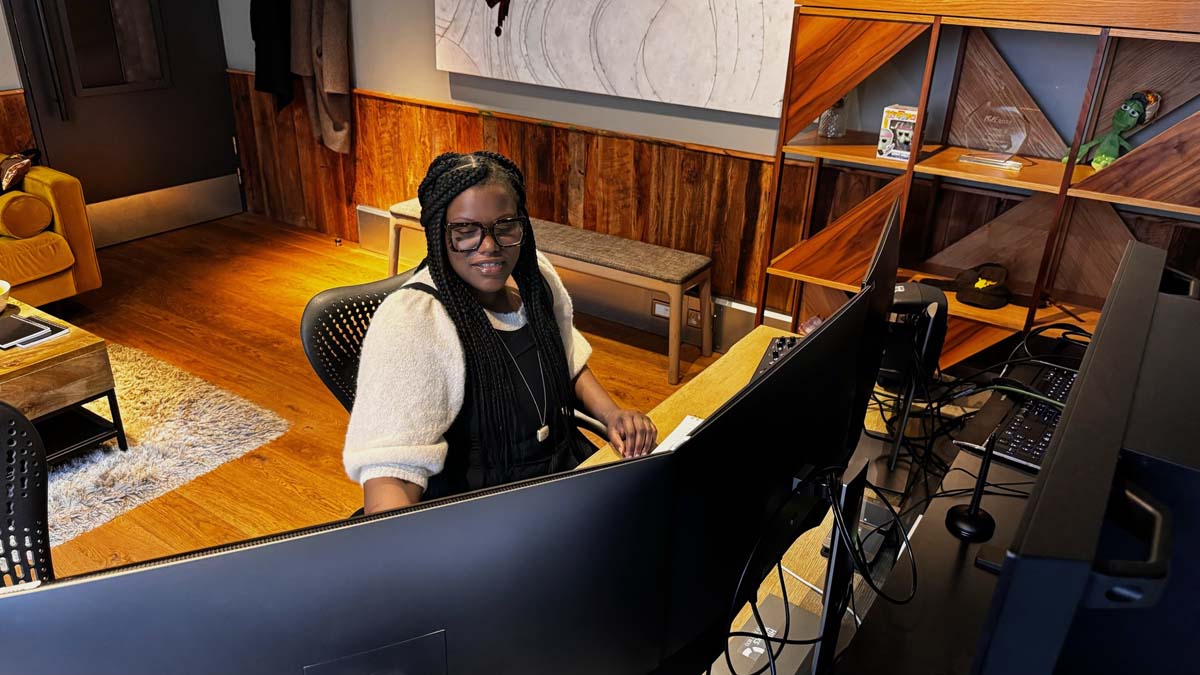
What did those dailies look like in those early stages? Did they look like 3D video games, or were they completely animated or completely lit?
Barry called it PS5-quality. I’m not a gamer, so I don’t know the technology. Depending on how long an animator has to animate a scene, some of it really looked good, and then some of the scenes that we created later and they had to quickly assemble didn’t have the same quality or didn’t have the characters moving in the most graceful way because it was something that they had to put together really quickly.
Every edit point that I’m choosing is based off of something, whether it’s a movement from the character, a movement of the camera or something that’s happening sonically, that motivates me to edit, but sometimes when we got the final animation, the camera movement isn’t exactly the same. Barry and I would say, “Something’s off. That felt different than the off-line.” Then we would go back to the off-line and we’d see that James was panning the camera to the right as Mufasa looked towards the camera. That’s why that shot worked and that’s why the edit worked. So the animators would look at it and say, “We see what you mean. We’ll go back in and adjust.” So that’s why I tell people that it feels like we had to make this movie five different times, because in each stage there’s something that you’re reconstructing or you’re trying to get the same feeling from it, and you want the audience to experience what you initially experienced when you made the edit. So you had to be very careful to make sure that the connection between the shots is still the same in each different iteration of the process.
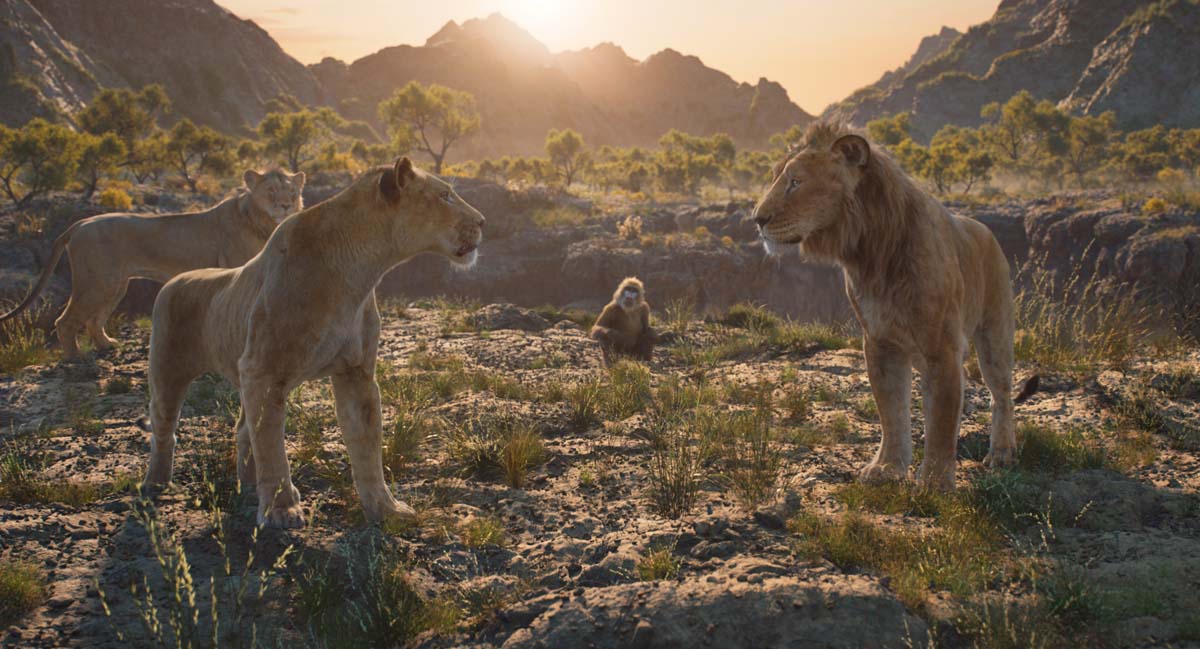
What did you watch to prepare to edit this? Did you watch the original animated film? The musical documentaries about African animals?
We didn’t really watch anything. It’s so funny that you ask this question, because Barry and I were doing press 3 or 4 weeks ago in Rome and someone asked about the scene where Eshe is teaching Mufasa how to hunt using his senses. She asked, “Did you watch documentary footage to edit that scene?” No, we didn’t. I understand Barry’s sensibilities and what he’s going for based off of how he sends me the footage and what the dialogue is, so for me, it’s a conversation with Barry. It’s a conversation with James and understanding what’s motivating the scene. That’s my jumping off point for editing. It’s rarely ever an actual reference of a film or a documentary.
Sometimes on a live action feature film, editors sit in on the ADR sessions. There really aren’t such things with animated films, but the voiceover sessions. Is that something you were able to do, or did you have more important things to do at that point?
No, the voice records are actually probably the most time-consuming things to record and edit, so I sat in on every single voice record next to Barry. Oftentimes you did “series” where each take is named Alpha, Bravo, Charlie, Delta, so on. So he would say to me, as we were recording in real-time - “It’s Charlie.” Or “Foxtrot” or “Mark down Golf.” So I would circle the takes he liked, then before we would move on to the next take, he’d say, “The three I would love to see is A on to B, then give me F into G. Then let me just hear H.” So we had the shorthand of knowing the dialog that he wants me to try when I start to edit it together and have him listen back to it. Kelvin’s dialect coach, Jerome, sat in on t the recordings to give Kelvin any pointers on his accent, and afterwards he asked, “How do you keep up with all of this? I actually have seven notebooks full of voice record sessions.
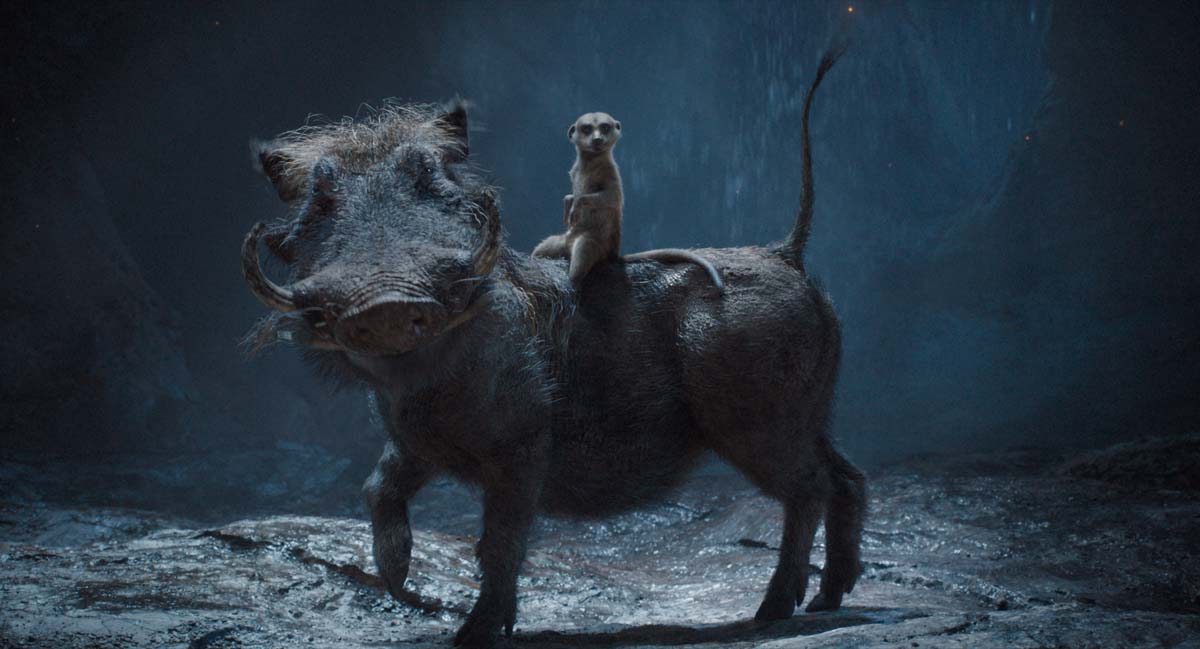
The first 3 to 4 sessions Barry and I had to find our footing, but after that it just became second-nature of highlighting the ones that he wants to hear again and then in real time saying “Let’s catch a series of this one word because they kept connecting it to another word and I would love to have it clean. I just became really good at being able to dissect the elements of what very would want, and that was key. The voice is so instrumental in movies like this, because the voice is what inspired the storyboard artists. It’s inspiring the animators for how these characters actually move and talk, and their expressions are informed by that original voice, so getting those performances dialed in and making sure the dialogue is effective was so essential in this whole entire process.
I doubt this is true, but did you shoot mo-cap? Was there mocap on these voice performances, these acting performances?
No, we didn’t shoot mo-cap, but the visual effects department did shoot the actors as they were recording their voice records. One thing that was created during production of Mufasa was something called “quad-cap.” The first third of Mufasa was done in the traditional way where Barry would virtually see where the characters were placed. He would give the animators notes, then they would go do them. For the animators to do Barry’s notes on how the characters are moving within the space of the scene would probably take roughly 2 to 3 weeks. Our whole production process was getting a little backed up because Barry’s a very diligent filmmaker, so he would have notes on things and they would have to do the notes, so we couldn’t shoot the scene yet because the animators had to do the notes. One of the things that they then realized was, “What if we bring in this thing called quad-cap?”
Quad-cap was: the animators would put on suits and Barry would be able to direct them within the space of the scene, so instead of spending two and three weeks doing notes, in real-time Barry could reposition them and have them responding to the other characters within the scene, then they could do takes of that and James could shoot it. That was basically what accelerated our production process - when they figured out that they could create this thing called quad-cap. Quad-Cap was something that didn’t exist before. It’s the ability of the animators to put on these suits, and even though they’re walking upright as humans, their movements would translate into animals walking on all fours. That blew my mind. I was suddenly getting dailies where the characters were responding to each other in real time in a more effective way. That was something that really kind of changed the game in our production process.
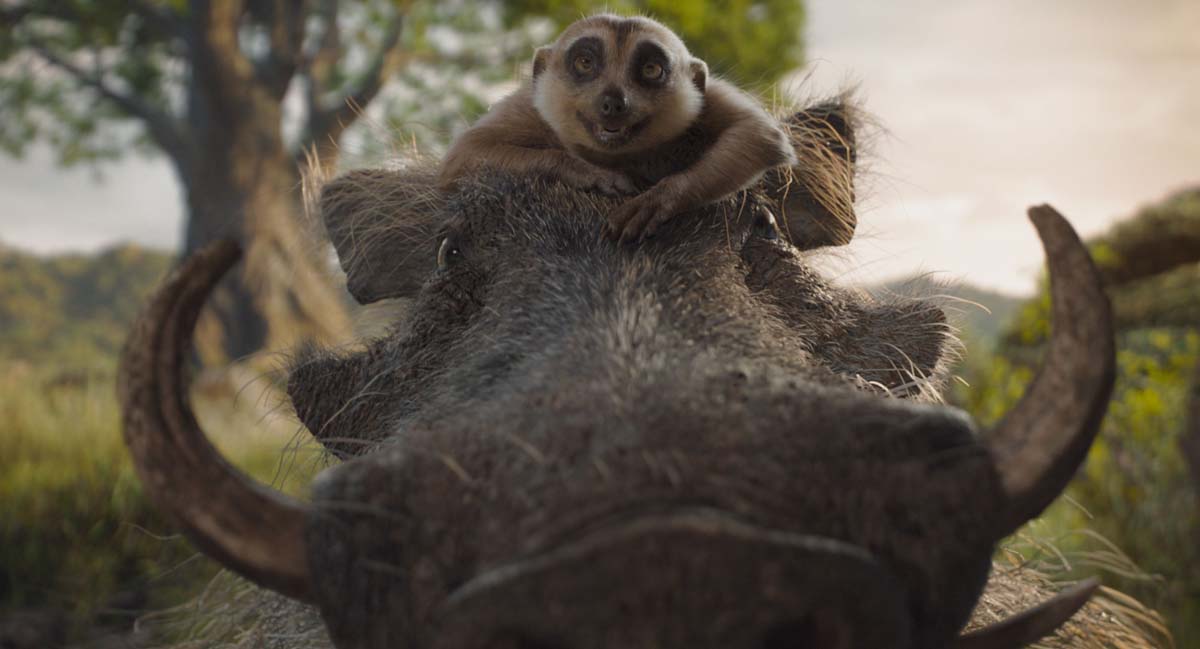
It sounds a little bit like the production process for Avatar II, where they had performances that were directed in a specific location, then they could go in later and shoot whatever angle they wanted of that exact performance in that exact location.
Exactly. A lot of the crew from Avatar worked on Mufasa in the space between Avatar II and III. A lot of the technology they used, we had the ability to apply it to how we navigated Mufasa, which was super helpful.
Tell me about temp music. At what stage where you getting actual tracks from the composer, and what were you using for temp music before that?
Barry’s super-picky about what we use as temp. Oftentimes he likes us to use very ambient temp tracks that aren’t super specific. Oftentimes when I initially start editing a scene, I’m not using any music. I’m just editing the scene as is, then later on applying some type of music before sending the cut to the studio, then later on the composer came in. It was a very interesting process to find the sound because you have this iconic score by Hans [Zimmer] and the original Lion King, but then you also have the ear and the tonality of what Barry likes to experience when he’s watching a film, so finding that common ground and common language that also was befitting to what we were doing editorially wasn’t instantaneous. What Nicholas Britell and Dave Metzger were able to create tonally was something that was so fitting to the film of Mufasa. Oftentimes, with animated films, the music doesn’t stop, so that is a very, very hard thing to navigate when you’re not only creating sound that’s supposed to emphasize what’s happening in the picture, but you’re creating a sound that’s not supposed to detract from your experience as an audience member. Ultimately we’re able to land in a space that was so befitting of not only what we are creating, but making a new sound for a new generation.
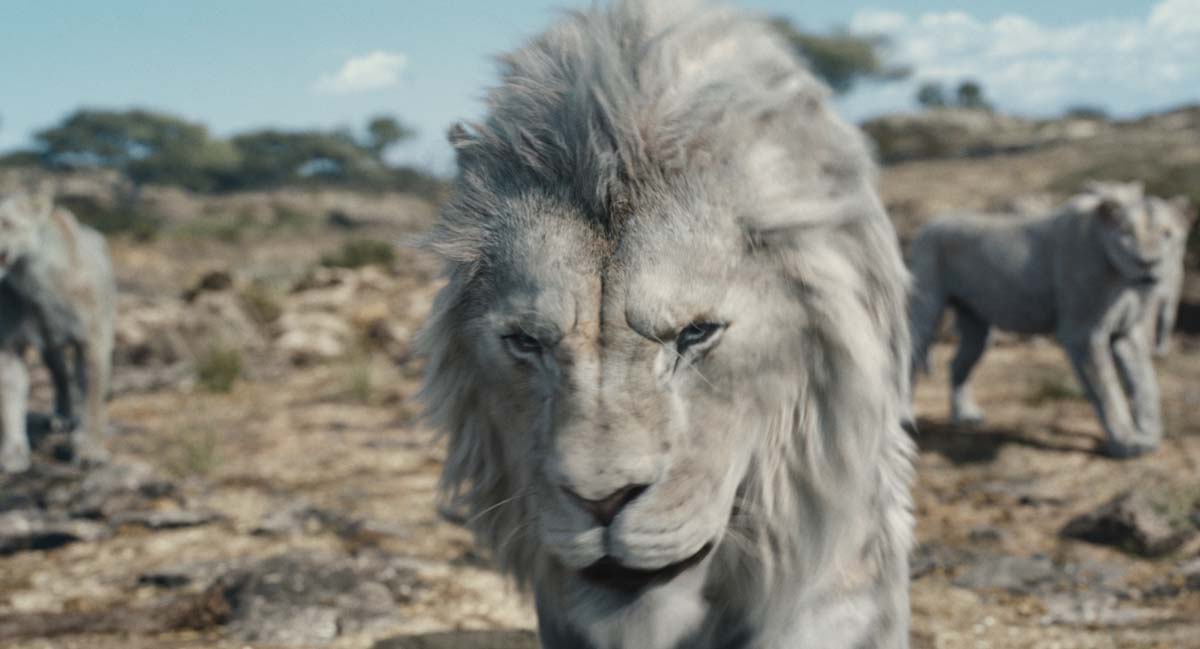
Speaking of sound, what about temp sound effects? Did the sound team deliver like a toolkit or something early on for growls and wind noise and “Africa”?
The very first time we screened this movie for the studio was November 2021, which feels so far away. Onnalee Blank, our sound supervisor, did a temp mix for our animatic. Some people questioned doing a temp mix for an animatic screening, but Barry and I both said that it was essential to have this temp mix, because the entire movie was just storyboards. We didn’t even have songs yet. Our songs were just these placements of song interludes where songs could go and tonally what they would sound like. What Onnalee and her sound team were able to bring to the table were so essential because it helped our movie move, because things that weren’t quite coming across cinematically were coming across sonically with what we were able to create in the mix. I love how the movie sounds, and Harry Cohen, who’s obviously an iconic sound designer and artist, worked on Underground Railroad and also worked on this film. His library of lion sounds was so essential in creating this movie because everyone tells me how real the lions sound. They did this really cool thing of integrating growls with dialogue, so it feels like these lions are actually talking and growling at the same time. It’s so effective how these emotions are conveyed through not only the images, but sonically. So sound was super important throughout this whole entire process. Every time that we did a cut to the studio, we would do a turn over to Onna, because all the scenes would be in different states of production. Some would be in final animation, some would be in comp renders, and some of them would still be in storyboards. Before we hit the stride of finishing the movie, it’d be a hodgepodge of elements that we would tie together with sound.
Talk to me out about cutting the race montage. There’s an early scene where the two brothers have to race to a tree and back. There’s no dialog to help you with the pace. There’s just some exciting music, and you’ve got to make it as exciting and interesting as possible.
The race is one of the things that really came together very early on. It was one of the scenes that we knew it wasn’t going to change, so we were able to shoot it in our first phase of production. One of the things that we wanted to convey in this race was not only the cubs having fun with each other, but this was the first time that we needed this special connection with Taka demonstrating this really sweet way of allowing Mufasa to know that he belongs. The pace of that was something that Barry and I really worked on, because you have these two cubs, you’re just meeting them for the first time, so we want people to be able to distinguish who was Mufasa and who was Taka. We also wanted to tie in Mufasa’s running theme of having difficulty with water. I was listening to Barry as he talked to the storyboard artists about what he wanted each step to convey, and as you got to the previs stage and were actually cutting it together, things would really work in the storyboards, then as we started to create the final animation, things were so cool in storyboards, but you then have to find the language and how to make them just as effective in the animation.
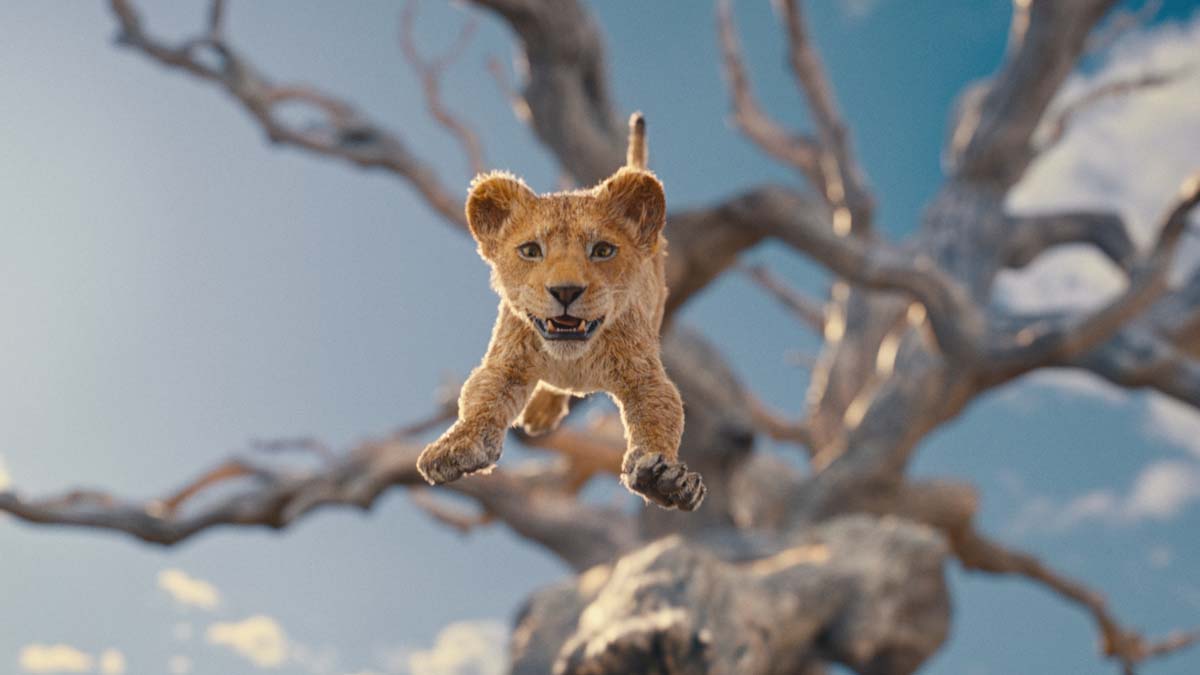
There was a really cool shot that was designed for Mufasa jumping off and going into the water, and Barry and I - in the visual effects reviews - discussed how Mufasa’s face was supposed to change from being elated to then realizing he’s about to drop into a big puddle of water. That was one of the things that we worked on wi"h the animators, because when you watch it in a theater and you hear kids laugh at that expression, you realize, “Okay, it worked!’ We wanted to make sure that it conveyed that this is a lot of fun and you’re supposed to enjoy this race, so it’s one of the sections of the film that I really enjoy. That moment between Taka and Mufasa when Taka says, “I always wanted a brother” was a discussion point to make sure that everyone was aware of what Taka was doing - to make sure the gesture was noted by everyone - and the score that Dave Metzger did there brings back the theme of “I always wanted a brother.” It’s so effective. The last time I actually watched that section, I teared up a little bit because I know the journey that these brothers are about to go on, and it’s a really special moment between those two characters.
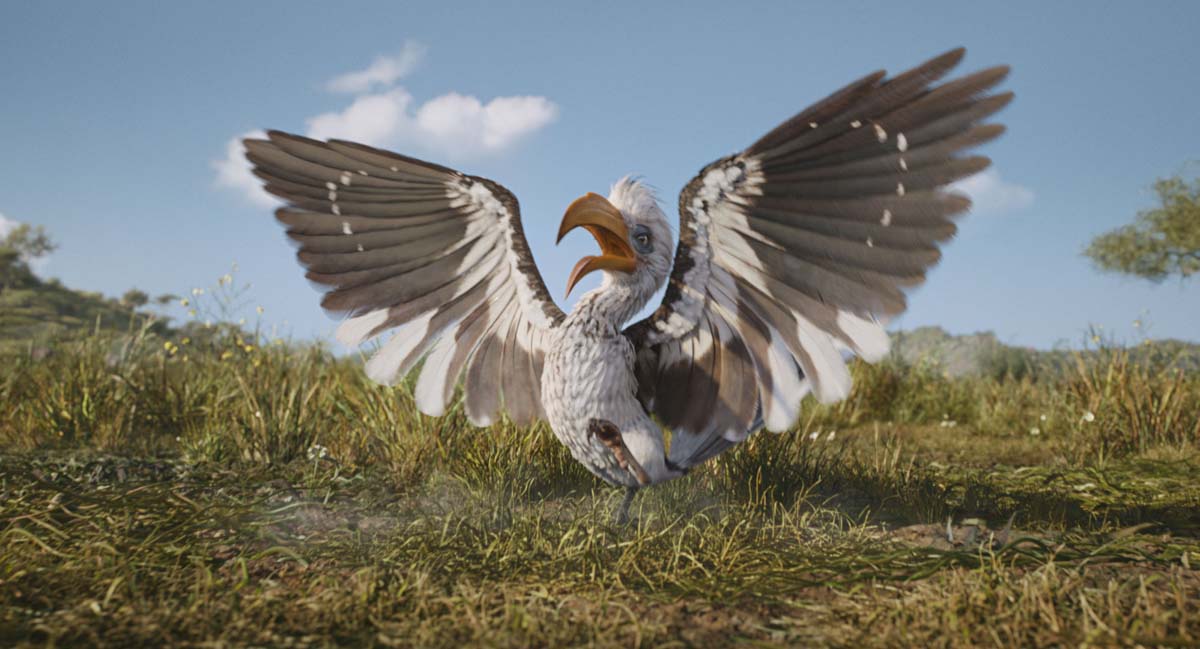
Is there anything that you had to do to prepare to transition into song? Anytime you’ve got a musical, it’s a little bit of a break from reality. Or what did you try to do so it wasn’t a break from reality?
Barry and Lin Manuel Miranda - who did the songs for the film - they really wanted the songs not to slow down the story. They wanted the songs to be a continuation of the conversation that was happening. One of the things that we were very particular about was making sure that not only was what the characters were talking about up until the point that the songs starts influencing what they’re about to sing about, but also that there was some type of musical transition that keys people that something was about to happen. I think working with Dave Metzger to create those transitional musical elements, and also Barry working with Lin on what the characters are saying in the songs was super effective because as you watch the movie, it doesn’t feel like you’re hitting a speed bump and the songs just start. It’s kind of a fluid movement from conversation into what the message is behind the songs. That was one of the things that we really wanted to focus on: that the songs feel integrated into the film, and not something that was just attached.
Is editing the songs themselves any different than cutting dialogue? Or do you just feel you’re editing story or you’re editing a conversation and they just happen to be singing?
I had so much fun editing the songs. They are some of my favorite parts to do because of what Barry and James did with the camera movement in these songs. But I approach editing songs the same way I approach editing a scene. I try to be on the right character at the right time when they’re saying something that’s meaningful and powerful, so the audience is grasping what they’re actually saying and the emotion behind the line that they’re saying.
For example, the moment in “We Go Together” when Taka starts to sing about Sarabi, it’s just so lovely. There’s a lovely camera angle that booms up towards him and stays on his face as he’s looking down at Sarabi. It’s so sweet because you see this character and what he yearns for. Whether it’s going to be reciprocated is up to the storytelling itself. But to see how passionate he is in the moment is a lovely moment that we were able to create cinematically.

One of the places that I thought might have been difficult to navigate were some tonal transitions. There’s one near the end of the film where our hero group is being tracked by the females of the bad pride, so there’s this tension of “we’re being hunted” but there’s also a very light-hearted song at that moment. Then we’re back to the tension. Can you talk about the key to making those tonal transitions feel natural?
Barry and I have such a love for not only action movies, but these thriller movies that came up in the 90s in the late 2000 that integrate something that’s fun and lighthearted, but there’s still this undercurrent of tension that exists from the person who’s pursuing you. So we had to strike that balance between those two things. We want people to be able to enjoy the moment, but also not forget that there’s a chase still going, so transitions were key in the storytelling because it’s a balancing act of not only being able to tell the story of Mufasa, there’s also the story of Kiara being told. So the back and forth of that was a delicate balance of not overstaying our welcome in either story and integrating it in a way that it’s certainly pleasurable for the audience, but it’s also done in a way that it feels organic to the story that we’re trying to tell.
Did you ever have an instance - since this is a long process - that the structure may have changed at some point from the script? For example, maybe when you would intercut Pumbaa back at the cave and the rest of the movie with Mufasa?
Seth Rogen, who plays Puma, and Billy Eichner, who plays Timon, are so good at what they do. Their comedic relief gave us this ability to jump forward in time because we’re coming back to these cave cutaways and everything they did was so good. But you then had to realize that there’s a moment where Mufasa’s story takes over, and it’s propelling the momentum, so you don’t want to undercut it by dropping in another cave cutaway, so it was about finding the right balance of going to go to a cave cut away and when just to stay in the story of Mufasa. That’s not something that’s easily done because the cave cutaways as standalone moments are funny and they’re giving the audience so much joy that you don’t want to detract from that, so it was just finding the right balance between these two stories and keeping the audience engaged.
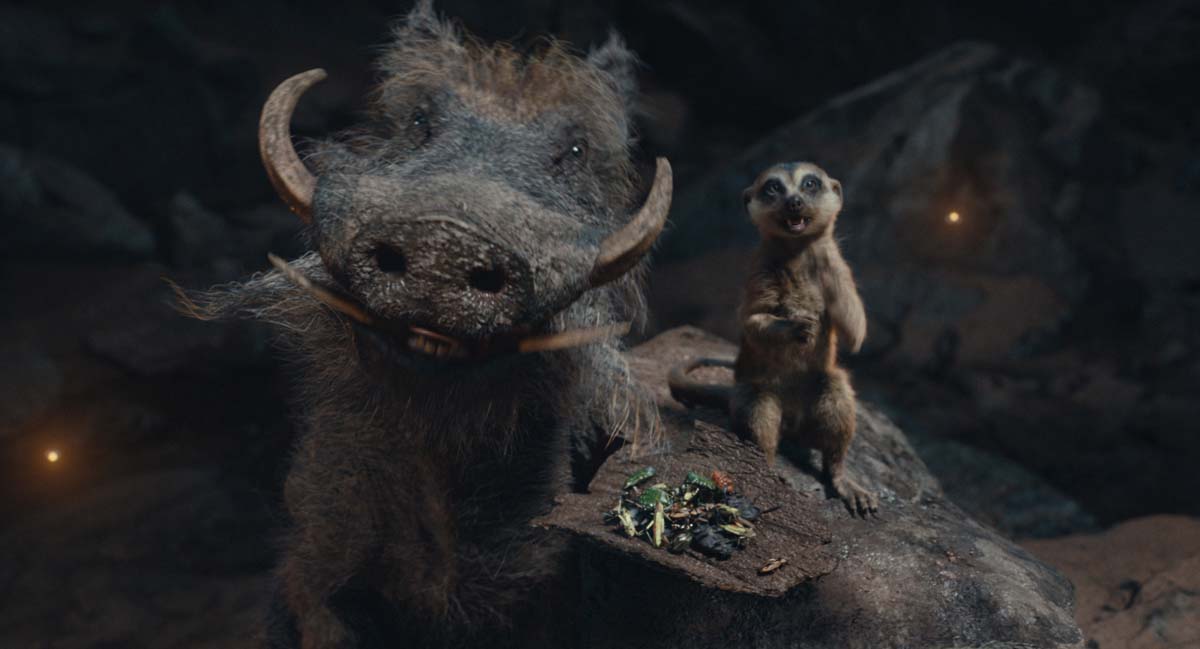
So that’s kind of like a macro-pacing thing of deciding how long you can tonally be in a place or how long you NEED to be tonally in a place without cutting to a different tone.
Exactly. Also, we wanted to be mindful that kids were joining in the fun on this one, but also creating a cinematic experience that the parents also want to engage in as well.
Talk to me about building the big climax as Mufasa is in a fight to become the Lion King and what it took to have that escalate and be satisfying.
There are sequences where so much happens in the span of time and you’re trying to keep track of it as an audience member. You want the audience to be able to feel all the beats and elements that go into a climactic sequence - like the ending of The Lion King - so I wanted to make sure that people were aware of not only Mufasa’s journey, but also the journey of all of his found family that have arrived to Milele with him. As I initially attacked the sequence, it was about making sure that each person is represented in this climatic experience, but also making sure that we’re hitting these particular beats of Mufasa - his own journey of courage - and also his becoming aware of what actually is needed to be a character of influence. As Mufasa journeys through all these different situations - figuring out who he is and what his perception of what was taught, and actually the perception of what is actually known - as he reaches his final destination, so the complexity of not only his journey, but how he unites these animals and also finds within himself the courage that he thought existed in other people was a delicate balance that we wanted to be not only effective, but we wanted it to feel earned, so that last stretch of the film was something that we really kept coming back to and making sure that every beat was coming off of something that we had planted and that we had watered and had grown into something that was nurtured by the entire experience and journey of the film. That’s tricky because sometimes people will watch something and wonder “how did we get here?” or “how did that end up happening?” But I feel like the way we constructed Mufasa and the way we planned it and traveled his journey, it was one of those things that - at the end of the movie - as we’re working through the sequence of not only him confronting Kiros, but his confrontation with Taka, it all felt like it was something that we had laid the groundwork for, and it felt like all the pieces were falling into place, and was not only earned, but something that was initially illustrated from the inception of Mufasa. His journey through water, his relationship with Taka, and his journey with his relationship with Kiros - all of those things were drawn very carefully - not only the dialogue, but also the situations that we put Mufasa in. So when you arrive at the end it all starts clicking in place: “Oh, I see what they’re doing there.” It all makes sense of how Mufasa arrived at this moment.

The other thing that you needed to navigate at the very end of the film was Kiara’s climax and matching it and balancing it with Mufasa’s climax.
One of the things I really love about Kiara’s Journey is it all starts off with her not feeling brave enough to weather a storm without her parents, so that is what inspires Rafiki to start telling her the story. And one of the things I love about how we finish up the film is that Kiara is journeying up to the same spot where Mufasa gives a speech in reel five. The juxtaposition of that, to me, just felt so fitting of an end of not only Kiara’s story, but Mufasa’s story and balancing the two. When to be on Mufasa and when to be on Kiara at the end of the film was something that we really wanted to get right, because there’s a lot of kids who don’t get to experience their grandparents. The only way they get to experience their grandparents is through stories that their parents or their aunts and uncles tell about them. It felt like it was a very fitting way to be able to tell Mufasa’s story and have her experience some semblance of him in his presence. I think it’s one of the things where people talk about legacy and they talk about found family, and sometimes kids are adopted and brought into families and the bonds between people in this world - I t’s not necessarily a blood bond. It’s a bond where you find someone on a common ground and there’s a connection, and it’s something that’s going to last not only a lifetime, but beyond a lifetime. That’s the essence of the story we were trying to tell. And I hope that people enjoy it because it’s something that we put a lot of heart and soul into. We walk away very proud of what we were given the chance to create.
Joi, congratulations on the end of a long, long journey.
Thank you so much. I really appreciate it.
